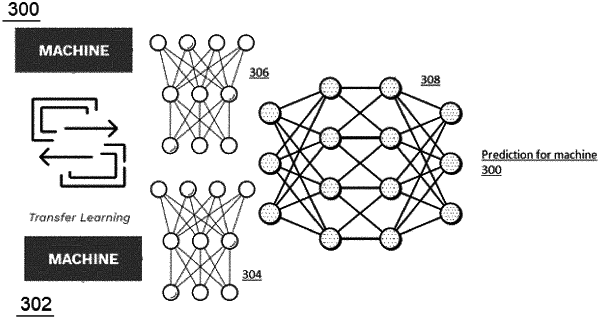| CPC G05B 19/41875 (2013.01) [G05B 19/41865 (2013.01); G05B 2219/31449 (2013.01); G05B 2219/32193 (2013.01)] | 18 Claims |

|
1. A method for process control in association with a production system that generates production data, wherein the production data comprises non-homogeneous machine parameters and one of: maintenance data, quality test data, and product and process data, comprising:
prior to training a neural network to model an operation of a machine in the production system:
without reference to the production data of the production system, applying domain-specific knowledge about a given machine type or production process step in the production system to identify one or more process variables and, for a given process variable so identified, identifying a feature;
isolating, from received production data, informative data associated with the identified feature;
using at least the informative data isolated from the production data, training the neural network to model the operation of a given machine in the production system, wherein the training includes transfer learning, wherein the neural network includes (i) a first network portion that is a common representation of a machine type in the production system, wherein the first network portion is a deep neural network (DNN), and (ii) a second network portion that is a machine-specific representation, wherein the transfer learning comprises: training the second network portion using at least the informative data isolated from the production data, and re-applying the informative data isolated from the production data to train the first network portion;
following completion of the training, receiving given process and machine data associated with the given machine and, in real-time, using the neural network to generate a prediction associated with a given product processed by the given machine in the production system; and
applying the prediction to control a workflow associated with the given machine.
|